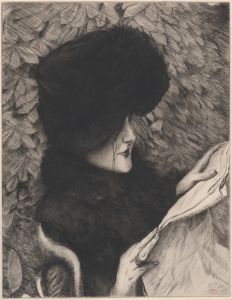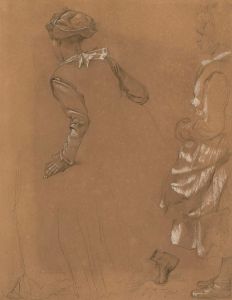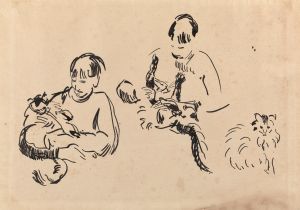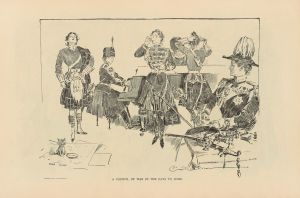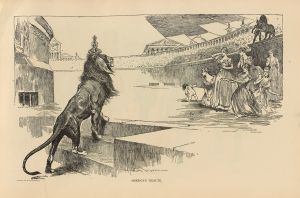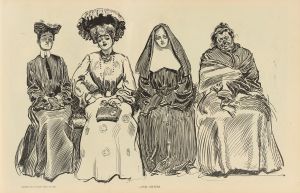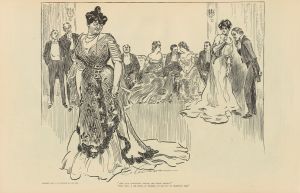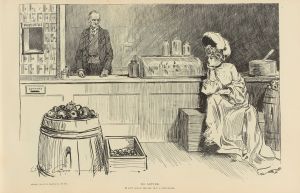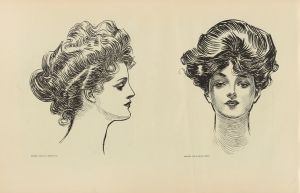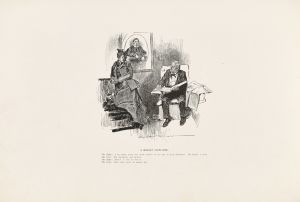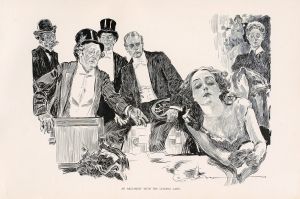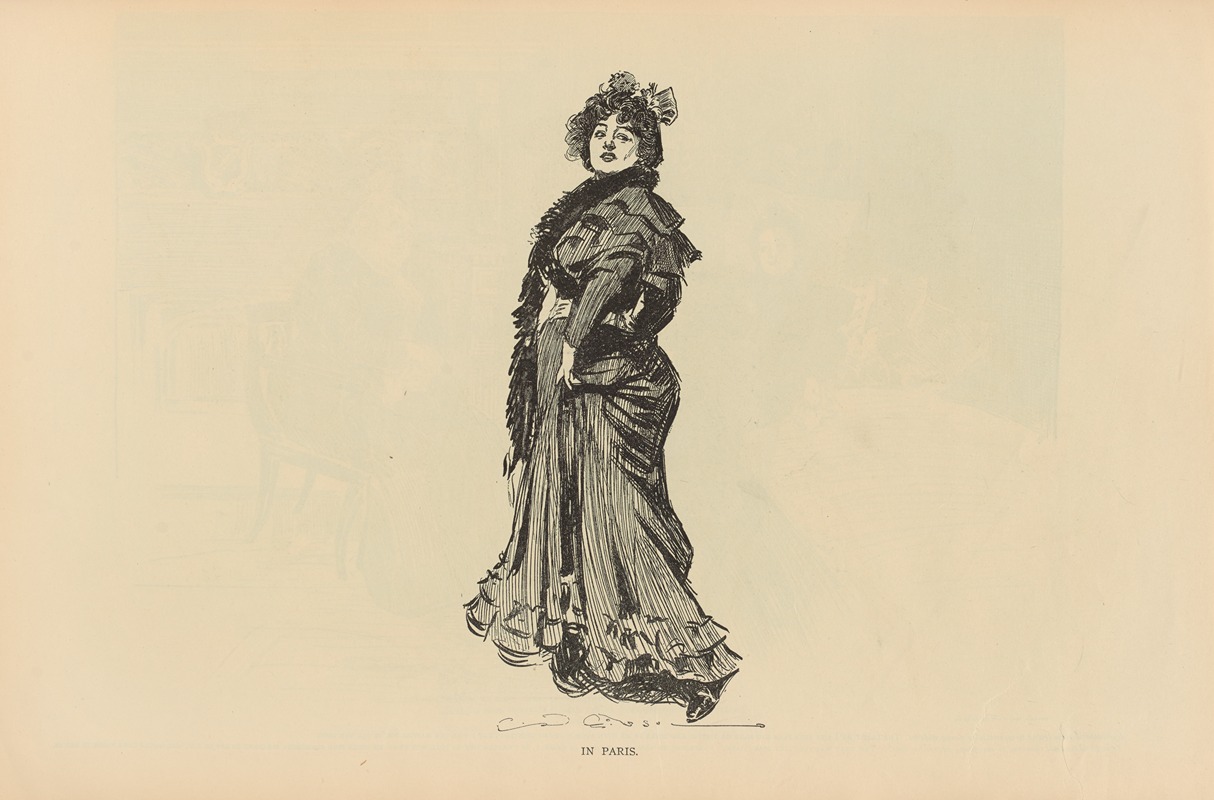
In Paris
A hand-painted replica of Charles Dana Gibson’s masterpiece In Paris, meticulously crafted by professional artists to capture the true essence of the original. Each piece is created with museum-quality canvas and rare mineral pigments, carefully painted by experienced artists with delicate brushstrokes and rich, layered colors to perfectly recreate the texture of the original artwork. Unlike machine-printed reproductions, this hand-painted version brings the painting to life, infused with the artist’s emotions and skill in every stroke. Whether for personal collection or home decoration, it instantly elevates the artistic atmosphere of any space.
Charles Dana Gibson was an influential American illustrator, best known for creating the iconic "Gibson Girl," a representation of the idealized American woman at the turn of the 20th century. His work captured the spirit of the era and had a significant impact on popular culture. One of his notable works is "In Paris," which exemplifies his artistic style and thematic focus.
"In Paris" is a black-and-white illustration that reflects Gibson's keen observation of social dynamics and fashion trends of his time. The artwork portrays a scene set in Paris, a city that was, and still is, synonymous with fashion, culture, and sophistication. Gibson's illustrations often depicted the social elite, and "In Paris" is no exception, showcasing elegantly dressed figures in a setting that suggests affluence and cosmopolitan life.
Gibson's technique involved detailed line work and a strong sense of composition, which is evident in "In Paris." The characters in the illustration are rendered with precision, capturing the nuances of their attire and expressions. This attention to detail not only highlights Gibson's skill as an illustrator but also serves to immerse the viewer in the scene, offering a glimpse into the lifestyle of the upper class during the late 19th and early 20th centuries.
The "Gibson Girl" archetype, which Gibson popularized through his illustrations, is subtly present in "In Paris." The women in the illustration embody the characteristics of the Gibson Girl: they are poised, fashionable, and exude a sense of independence and confidence. This portrayal was significant during a time when women's roles in society were evolving, and Gibson's work both reflected and influenced contemporary attitudes towards women.
Gibson's illustrations were widely published in magazines such as Life, Harper's Weekly, and Scribner's, reaching a broad audience and cementing his status as a leading illustrator of his time. "In Paris," like many of his works, would have been seen by readers across America and Europe, contributing to the transatlantic cultural exchange that characterized the period.
The setting of Paris in the illustration is particularly noteworthy, as the city was a hub of artistic and cultural activity. By choosing Paris as the backdrop, Gibson not only highlights the city's significance but also aligns his work with the broader artistic movements of the time. Paris was a center for the avant-garde, and while Gibson's style was more traditional, his choice of setting suggests an awareness of and engagement with contemporary cultural currents.
Overall, "In Paris" by Charles Dana Gibson is a testament to the artist's ability to capture the essence of an era through his illustrations. It reflects the social dynamics, fashion, and cultural aspirations of the time, while also showcasing Gibson's technical prowess and artistic vision. Through works like "In Paris," Gibson left a lasting legacy that continues to influence the fields of illustration and popular culture.





